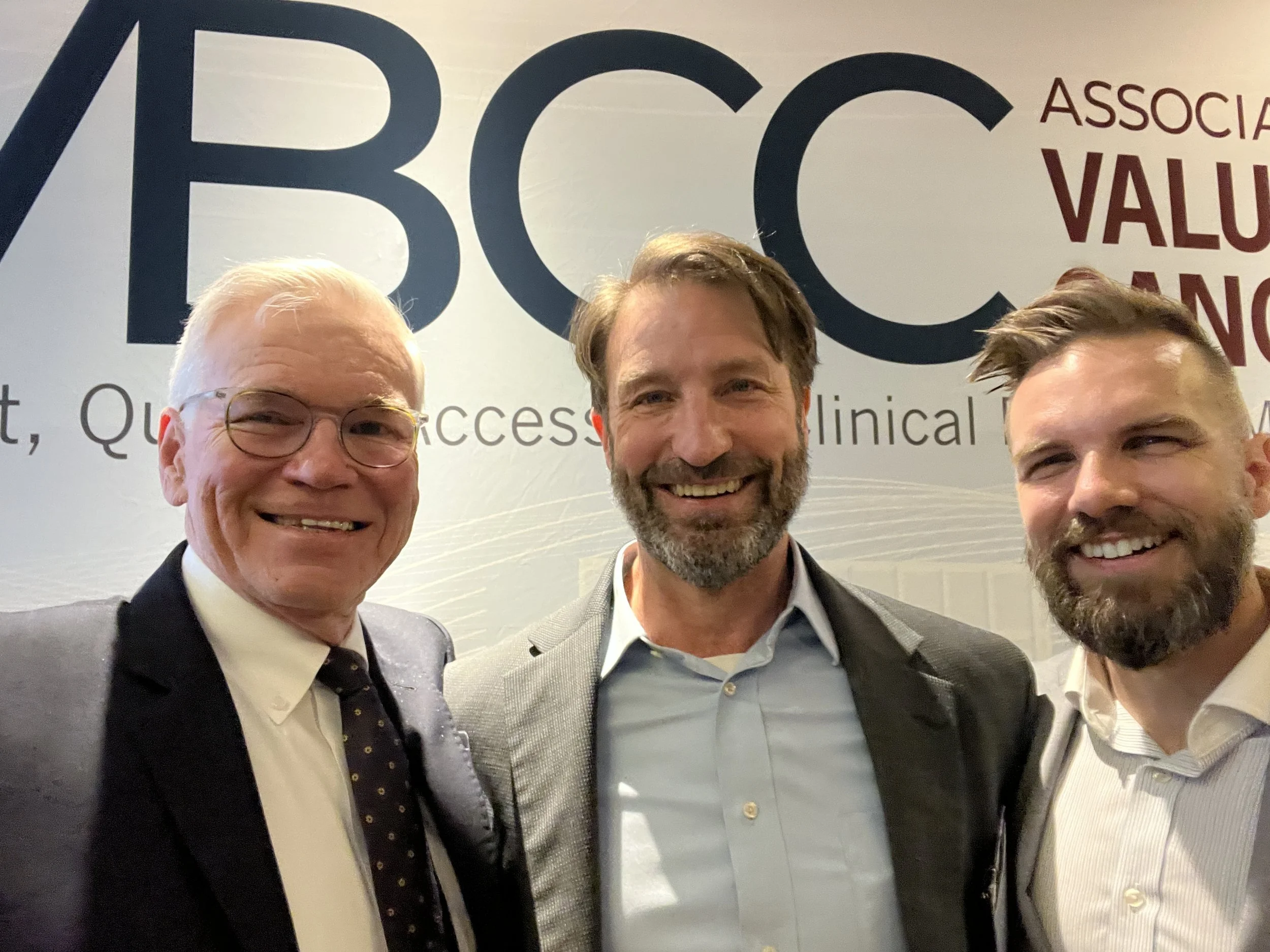AI, affordability, and access: my takeaways from AVBCC
Day 2 at AVBCC2025 is a wrap. Alan Balch and Samuel Stolpe provided great insight into the day-to-day challenges patients face managing their treatment journeys.
Ira Klein and I did a podcast about AI and pharmacy without using AI!
The Association for Value-Based Cancer Care (AVBCC) held its 15th annual conference in New York City on October 22–24.
If you want to understand the business end of cancer care from the perspectives of the patient, employer, and physician, there’s no better meeting on the calendar.
Rather than attempt to unpack everything I learned in detail, I’m going to share a list of the most striking nuggets of knowledge I collected. Each one is worthy of deeper research and debate. Heaven only knows when I’ll find the time to do that. Here we go…
The generic drug market is broken
John Murphy, III, President of the Association for Accessible Medicines (formerly the Generic Manufacturers Association), confirmed what we already knew: the generic drug market is in crisis.
The race to the bottom on pricing and high regulatory barriers have all but eliminated the U.S. manufacturing base. Shortages of critical chemotherapy medications are now common. Murphy recommends The Great American Drug Deal as essential reading to understand the scope of the problem.
Value-based contracting remains elusive
Despite meeting for 15 years, there was general consensus that true value-based contracting in oncology is still out of reach. The problem starts with defining “value” and only grows more complicated as stakeholders attempt to collect and share data across disparate sources.
AI will transform the traditional HUB model
The traditional HUB service model exists to meet three objectives:
Enrollment and activation
Access and affordability
Patient engagement
All three activities are labor-intensive and data-driven making them a perfect opportunity for AI disruption. The HUB service model of the future will focus more on the patient and less on the drug.
The rising cost of cancer care
The escalating cost of cancer care was the most frequent topic both on-stage and off. Cancer has now become the number one driver of healthcare costs for employers. Employers must take a more proactive role in motivating employees to get screened early. The population data already exists to target the right groups effectively. Meanwhile, troubling trends are emerging: measurable increases in colorectal and uterine cancers among younger adults with no clear explanation yet.
A looming shortage of oncologists
We are on the verge of a significant oncologist shortage. Retirements are outpacing the number of new graduates entering the field, raising serious concerns about future access to care.
Patient navigation and progress in melanoma
Encouragingly, there’s been great progress in treating malignant melanoma, and the patient journey has improved with the introduction of billable PIN (Principal Illness Navigation) codes.
More oncology practices are hiring patient navigators with excellent results, and AI tools are helping improve their productivity. Despite this progress, panelists estimated that only 50% of cancer patients currently have access to navigators.
The uneven patient experience
Despite all of the advances in treatment, a patient’s therapy journey is still largely defined by their zip code.
Treatment protocols vary widely by payer and region, and a single patient may have to navigate four distinct journeys simultaneously:
Clinical
Psycho-social (non-clinical)
Financial
Potential clinical trial enrollment
Alan Balch, CEO of the Patient Advocate Foundation, shared that one of the most requested items from a recent cancer patient focus group was simply free parking. Sometimes, it’s the small things that matter most.
Persistent system-level issues
High-cost sites of service for infusions remain a major challenge despite years of recognition by payors.
And as for 340B? If anyone can predict what happens next, they probably deserve a Nobel Prize.
Meanwhile, the U.K. and Germany continue to have 40% fewer oncology medications available compared to the U.S., underscoring how access remains inconsistent even among developed nations.
AI’s promise in research and precision medicine
There was universal agreement that AI will play a pivotal role in advancing research, new molecule discovery, and precision medicine.
As Dr. Mike Kolodziej quipped, “We will soon be living in a world where peer-to-peer reviews will be my bot talking to the payor’s bot.”
Final thoughts
I left the meeting energized by the empathy and dedication shown by the clinicians on the various panels, but also humbled by how hard it is to treat cancer.
For all the innovation, collaboration, and progress we celebrate, the system remains fragmented, inequitable, and deeply human.
Questions for reflection
As we move forward, I’m left with a few questions and I’d love to hear your thoughts:
Can AI truly make care more humane, or will it risk widening the empathy gap?
How do we align definitions of “value” across the patient, provider, payor, and employer spectrum?
What would it take to ensure that a patient’s experience isn’t dictated by their zip code?
And how do we balance scientific innovation with simple, human needs like compassion, communication, and, yes, even free parking?
What stood out most to you from this year’s AVBCC themes? Share your perspective in the comments below, I’d love to hear your take.


